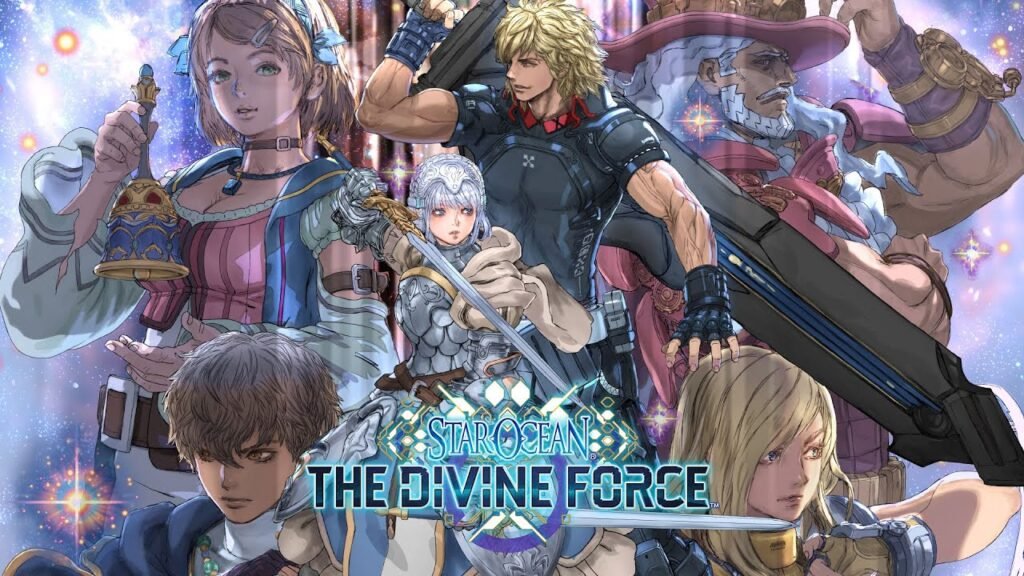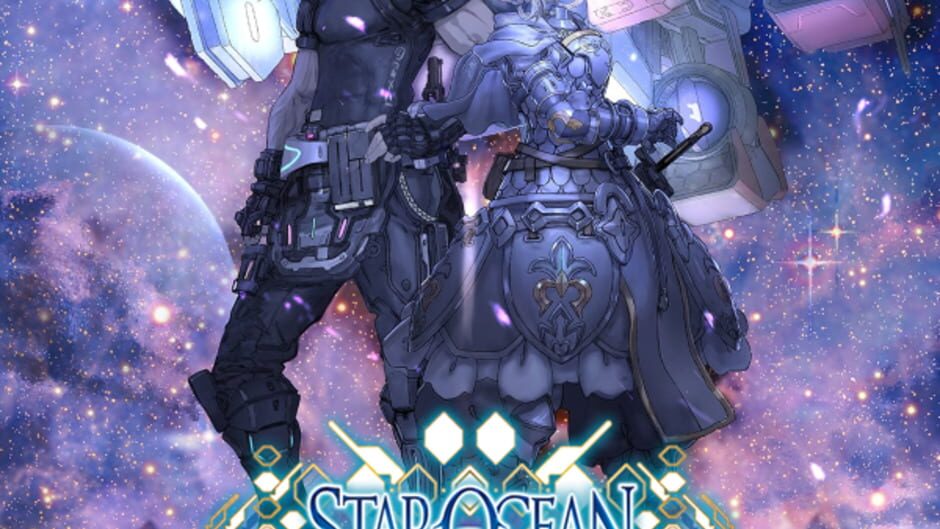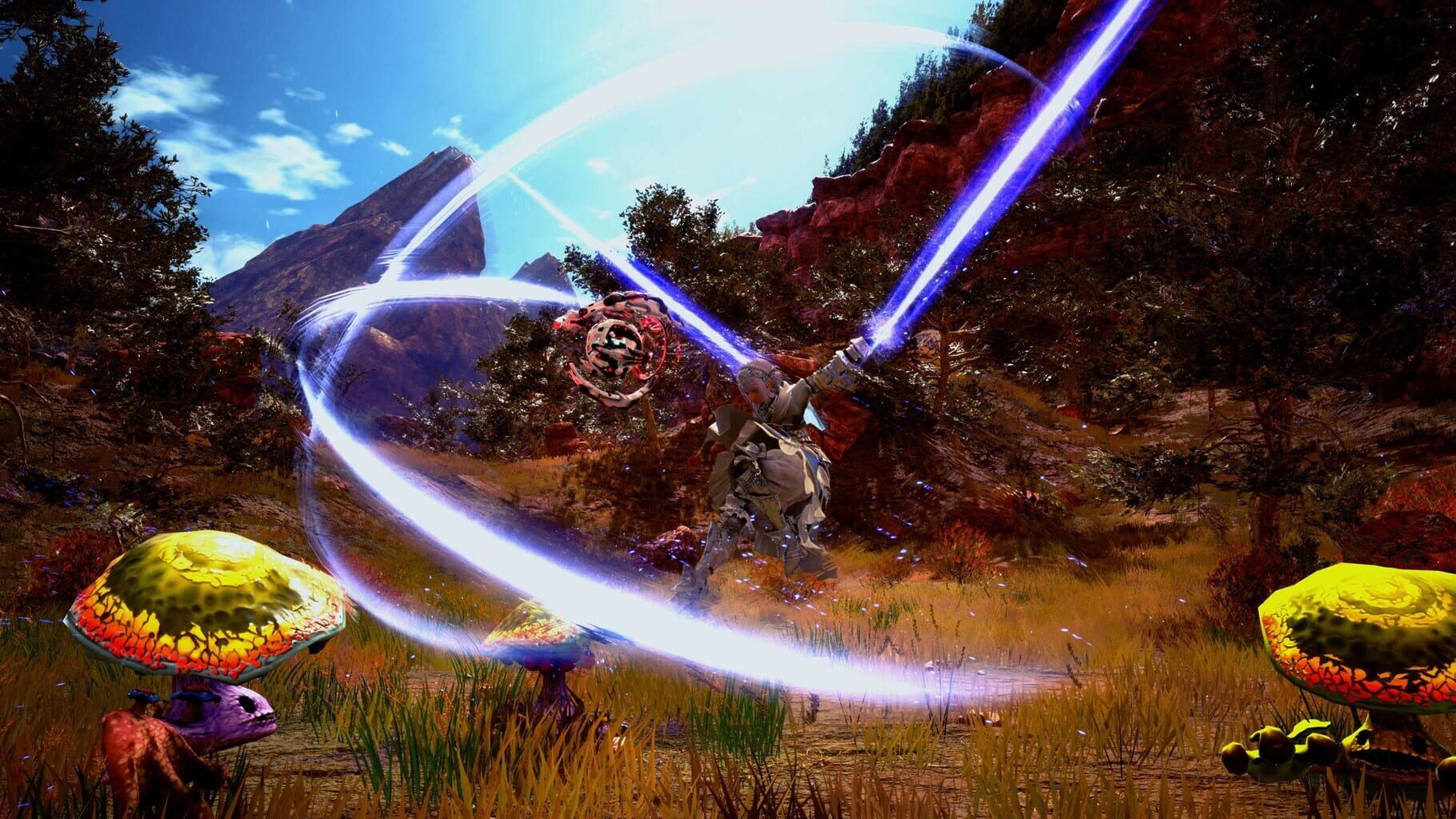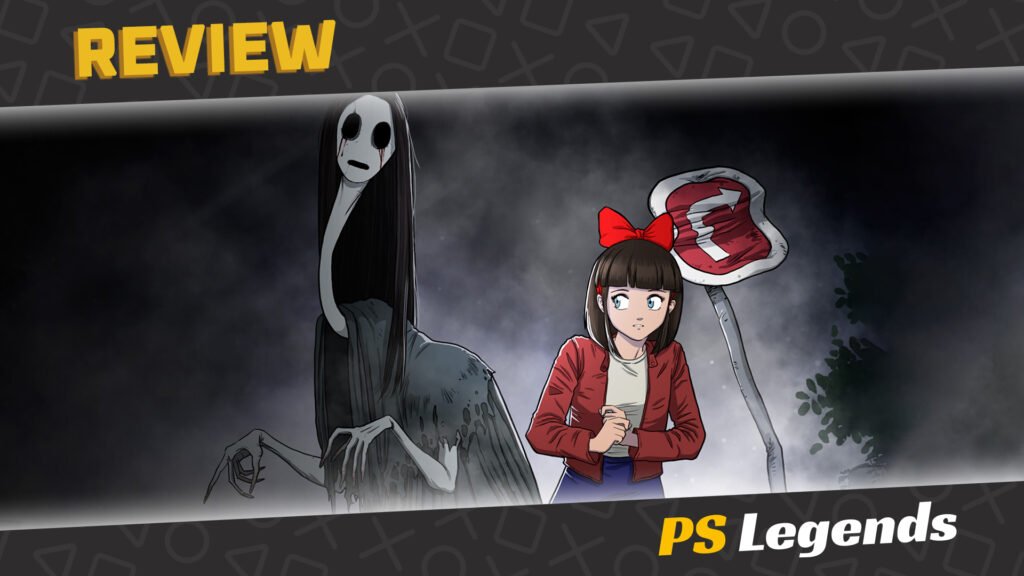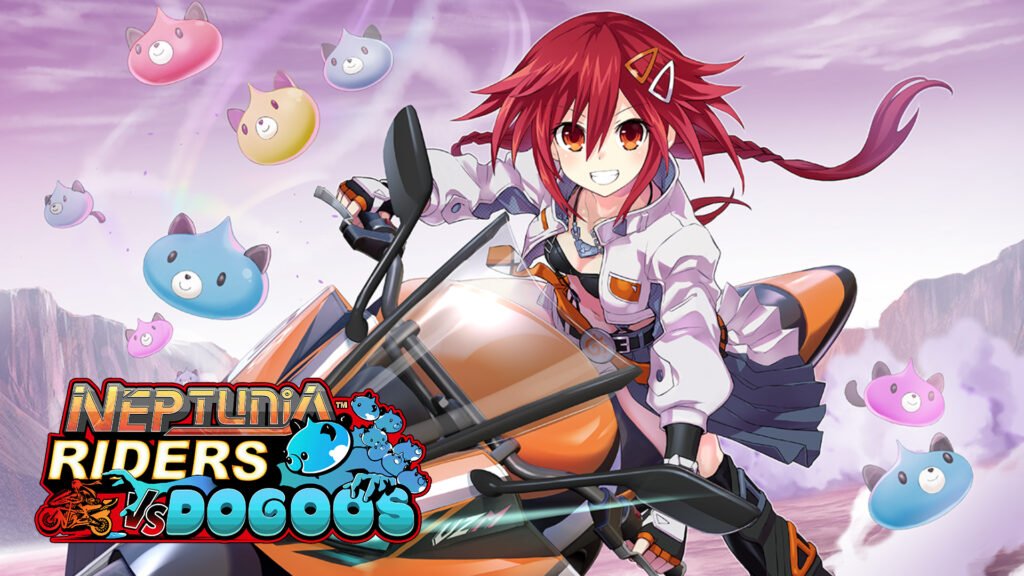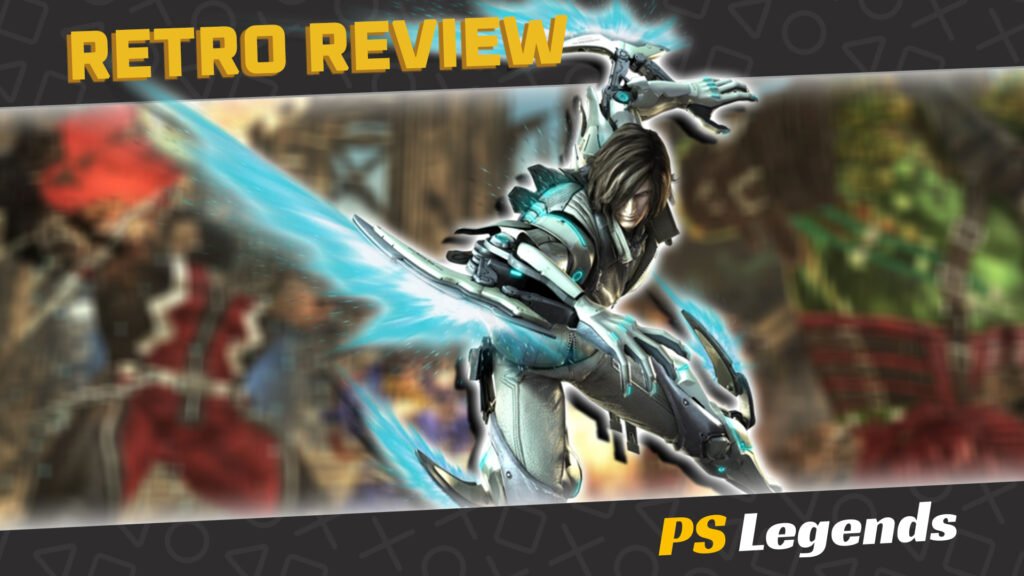I think most Star Ocean fans would rather the previous installment, Star Ocean 5: Integrity and Faithlessness, be stricken from the record. It wasn’t necessarily a narrative disaster, but the gameplay left a lot to be desired. Who on earth thought having mid-battle escort missions was a good idea?
It wasn’t even a necessary installment when you consider that Star Ocean 3 acts as a final chapter for the series and offers satisfying closure, whilst Star Ocean 4 is an origin story/prequel to the original trilogy. This leaves us in the awkward position where any further sequels can be little more than side-stories or ‘gaidens’ if you will, so they’d better be able to stand on their own two feet if they want to be taken seriously.
The Divine Force falls into this same narrative category, yet it handles itself with so much more finesse than Star Ocean 5 ever did. It also throws the player straight into the action as opposed to the enormous cinematic beginnings of the previous games. You can also choose your preferred protagonist this time, which will give you a shift in perspective and a late-game reward in the form of an exclusive recruitable character, giving you more narrative freedom than ever.
On This Page
Story
Your choice of protagonist comes down to either Raymond, Captain of the civilian cargo ship Ydas, who is stranded on Aster IV, an underdeveloped planet along with his crew after his ship is destroyed by a Pangalactic Federation Battleship, or Laeticia, Princess of the nation of Aucerius where Raymond’s escape pod crash-lands. The two parties meet up within several minutes of the game starting, so don’t worry too much about your choice of protagonist significantly altering the story.
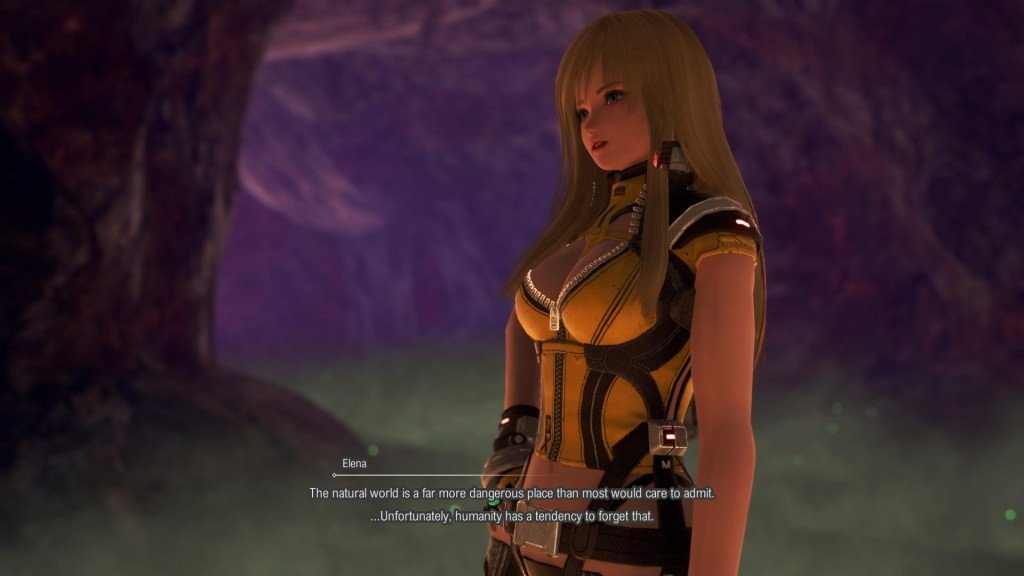
Raymond and Laeticia form a mutual alliance, with Laeticia using Raymond’s advanced knowledge and technology to gain an advantage against neighboring invaders, while Raymond seeks Laeticia’s combat prowess and political influence to track down his allies scattered around the continent while they wait for their distress signal to be answered and thus find a way home.
The story could use improvement in the originality department. When the real enemy becomes clear as you settle interplanetary politics, a story of humanoid and robotic integration comes to the surface. It certainly portrays a genuine threat to the universe, which certainly helps the player take the game seriously for a side story. However, it soon becomes abundantly clear that the plot is a blatant rip-off of the Mass Effect trilogy.
Gameplay
The Divine Force is a fun experience and surprisingly easy to pick up and play, considering the multitude of mechanics introduced throughout the series and the new ones introduced here. Traversing the world with the aid of your D.U.M.A device allows for short bursts of flight, allowing you to explore every location in more detail. You can also take advantage of this in combat by gliding into your enemies with an aerial dash to ‘Blindside’ them and land a critical hit while stunning them long enough for you to land a cheeky combo.
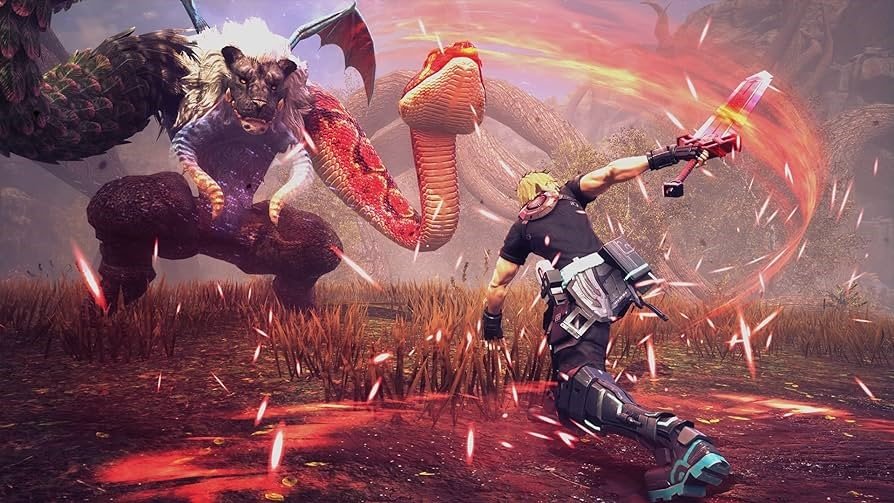
The flashy feel of fighting in The Divine Force is very snappy and fluid. The incredible particle effects and sparks that fill the screen make the attacks look and sound intense. Players will have to manage their action points when attacking since each attack comes at a cost. Blindly mashing skill buttons will quickly leave heroes wide open, and they will have to wait a moment to recharge unless you successfully execute a perfect dodge, which can increase the maximum allotted action points while avoiding damage. Surprisingly, I didn’t really click with either protagonist since Raymond’s over-the-top muscles did little to hide his ineptitude and lack of combat experience, while Laeticia proved to be the opposite: stern and stoic to the point of being cold and militant, with her combat style being a flurry of dual sword strikes which were too fast to follow. Choosing the lesser of two evils, I went with Raymond to bring in more elements of the game’s sci-fi roots. Fortunately, you can switch your on-screen character to any active party member.
Graphics/Sound
Every environment is gloriously detailed and often vibrant in contrasting colors, which grabs the viewer by their shoulders. Each area is vast and sweeping, the kind of setting that feels comforting to stare at. It can feel as if you were previously isolated behind concrete walls your whole life, and exploring the rolling hills of Aster IV is your first experience in witnessing nature’s splendour, which makes exploration and travel a joy to behold. As you progress, the game really highlights that this is an alien world, with columns of pulsing energy shooting into space and a fluctuating gravity causing rocks to float in nearby orbit.
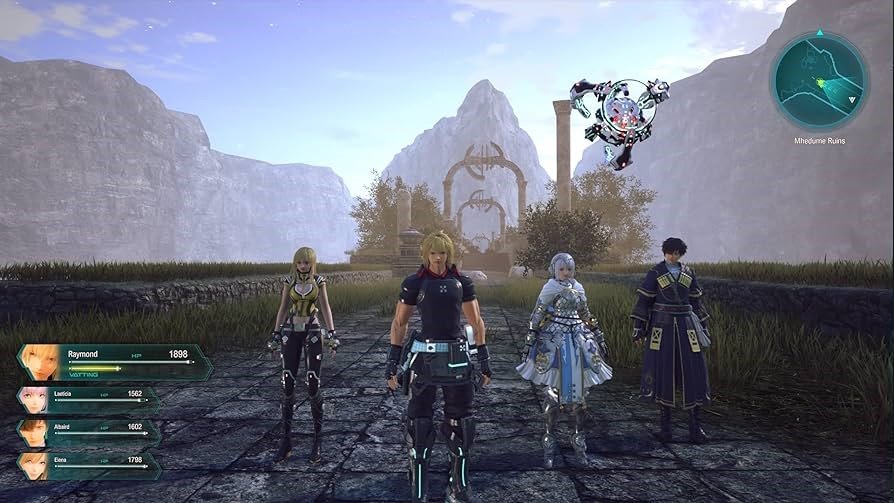
Character models follow in the footsteps of their predecessors, being a fusion of anime archetypes and realistic 3D models. Everyone is nicely detailed and overdesigned in a way that makes them stand out. The various materials and textures make each character feel very defined. Regretfully, the only visuals where tri-Ace cuts corners are facial features and expressions. One example is eye shapes and sizes, with most feeling too large or too small for their respective models. This can leave characters resembling dolls at first glance.
It’s not too noticeable, but you find most characters fail to emote much in cutscenes, and the voice acting is leaned on to make up for the lack of expressions. In many dialogue scenes, body language animations are fundamental but are also absurdly over-the-top. Characters do silly anime-style poses and gestures, and while it does work for comedic scenes, it comes off as unrefined in dramatic sequences. Fortunately, it’s far from a game-breaker.
I did enjoy the frequent witty banter from your party as they regularly chit-chat about whatever’s on their minds, though you’ll find that many of the voice actors are regular anime and JRPG contributors, such as Jamieson Price, Laura Post, and Keith Silverstein, which makes the familiar voices clash with other games. More diversity would undoubtedly be appreciated. Still, credit Erica Lindbeck for nailing android Elena’s semi-sentient tone. Motoi Sakuraba’s music for The Divine Force is more of the passionate orchestral brilliance one would expect for the Star Ocean series. Action sequences and battles are loud and chaotic, while the ever-present choir finds its way to adapt to every scenario, with more soothing, ambient tracks while exploring, making for a solid all-around effort.
Replayability
Like previous Star Ocean games, the trophies require a hefty amount of work, particularly from multiple playthroughs, save-reloading, and (ugh) crafting. Still, you get a trophy for every character ending you see, meaning you’ll need to juggle save files and fight the final boss over and over again to pop every trophy. Then, you’ll have to play through the game all over again with the second protagonist and repeat the process. It’s simply too much to ask of the player. Fortunately, the game is enjoyable enough to play without a trophy focus.
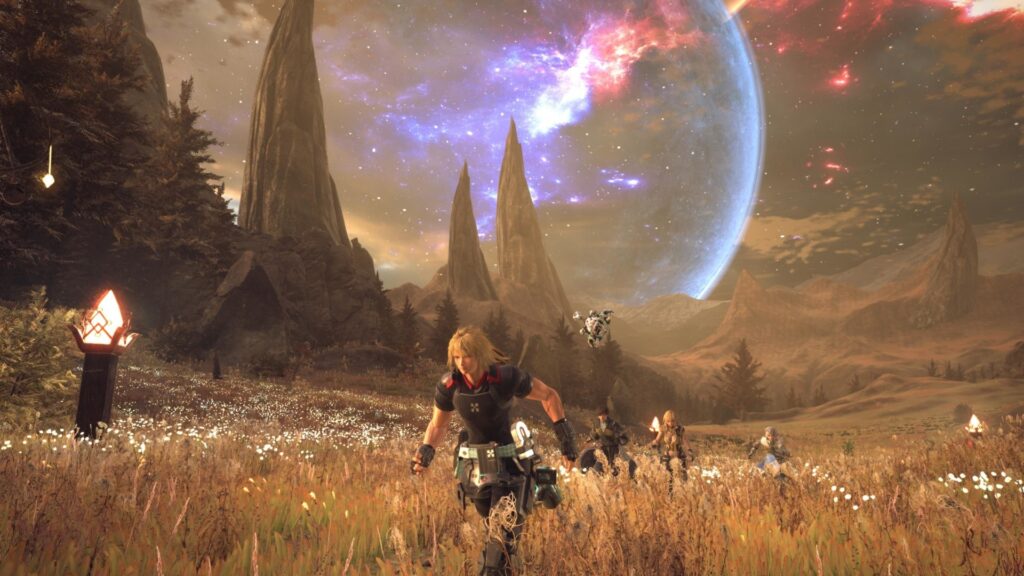
Conclusion
While the characters could be considered a mixed bag of pros and cons, I’m happy with my choice since Raymond soon grew on me as a character. It was a breath of fresh air to see his take on the situation. Many Star Ocean games will see a protagonist from a technologically advanced world land on an underdeveloped planet; their priority is usually to protect the UP3, a pact that stops advanced civilizations from sharing technology with underdeveloped worlds in order to prevent altering the natural course of evolution of the world’s history.
Raymond isn’t from the military, and being a civilian whom the Pangalactic Federation has betrayed, he’s more than happy to give the finger to the UP3 and nonchalantly shares advanced technology and medicine with the local populace in order to hasten his own agenda and make a few friends along the way. It’s pretty amusing to see.
Fortunately, I found a few fun supporting characters who got priority in my party, such as the adorably bouncy Nina and the absolutely gorgeous android Elena. Interacting with your party members grants you an extra scene with the character you have the highest affection for at the end of the game. I’m not sure this is handled as well as it could be since you can’t monitor your affection levels.
To my surprise, I ended with Raymond cozying up with elven milf Malkya, which struck me as an odd option since she spends most of her time flirting with the bitter old Midas, which he reciprocates when he isn’t ogling Elena. Whilst the game and its trophies hint that Laeticia is Raymond’s canon love interest, her ending was relatively uneventful, much like Elena’s and Nina’s. Little tip: if you want an ending for Raymond with some actual substance, maybe aim for romancing the cute and misunderstood Federation Officer, Marielle. It was the only one worth watching.
Nevertheless, The Divine Force gets a passing grade. It’s an exciting experience, even without an original storyline. Combat and traversal are equally fun, even with a couple of end-game difficulty spikes (don’t be afraid to grind a little and restock healing items), and you will find some great characters amongst the undesirables. It is well worth a go. Just make sure you play on a large screen since the text is ridiculously tiny.
Despite its flaws, nothing here offends, breaks the game flow or fun factor, or distracts from the experience. It has top-notch production values for the most part, and it more than makes up for the utterly disappointing Integrity and Faithlessness. This balance of incredible visuals, exciting combat, and addictive exploration mark this entry as a series high point. Even the familiar story has moments of brilliance.
Joys
- Stunning environments
- Fast, exciting combat
- Elena is awesome
Cons
- Characters are a mixed bag of tropes
- Unoriginal story
- Character models not quite right
